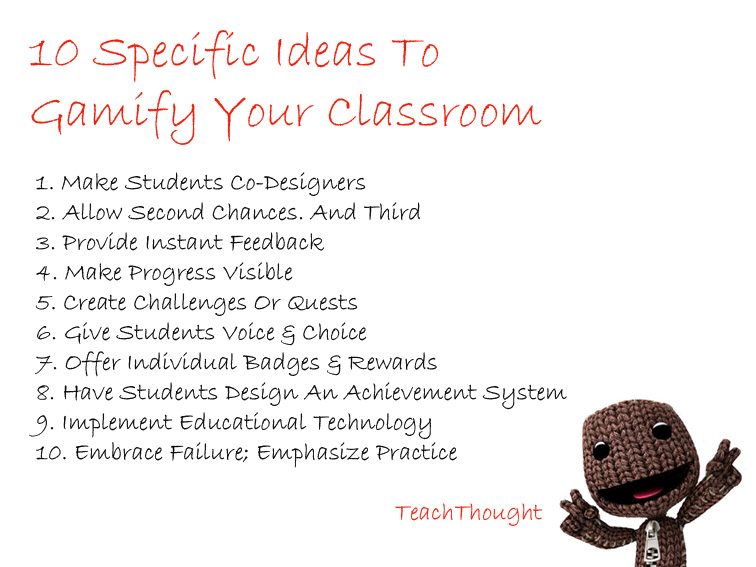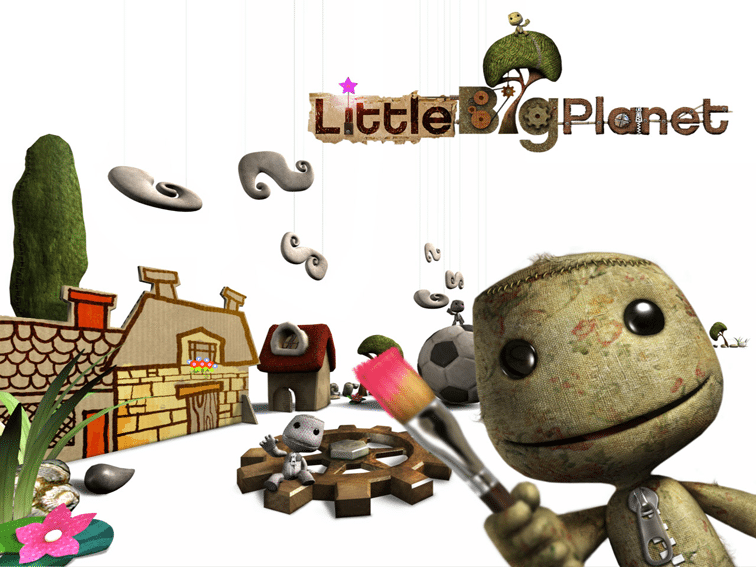
How To Gamify Your Classroom
by Mike Acedo
In today’s classroom, educators are constantly required to mold their teaching methods to give students the best opportunity to succeed. It is not only imperative for students to learn the required material, but also critical that students gain a sense of confidence toward their work, and find motivation to expand their learning.
However, this can be difficult for some students, who may struggle in traditional, lecture-based class styles. For some students, finding the motivation to complete homework or prepare for class can be a constant struggle, especially when every effort is met with a poor grade or frustration from teachers and parents. Therefore, teachers must become more and more creative when motivating students to learn.
We’ve talked about designing your classroom like a video game before. Games are one motivator that almost all kids are responsive to. Many teachers have had the experience of asking students to stop playing games such as Angry Birds during class. However, it can be rationalized that games can be a very strong motivator for students when the same game elements are applied in an educational context. Thus, some educators have adopted the concept of Gamification, where the structure of gaming is applied to a non-game framework.
Though some teachers may use game-based learning, such as having students play games like Little Big Planet (featuring Sackboy, pictured above), Minecraft or Civilization to reinforce content, Gamification uses game elements such as challenges, feedback, levels, creativity, and rewards to motivate students to learn, and master concepts.
How To Gamify Your Classroom: 10 Specific Ideas To Get It Done
1. Make Students Co-Designers
Present the class syllabus as a form of Gamification. Work together with students to develop the narrative of the class, as well as short, and long-term goals. Allow students to have a voice in the class design, vote on a model that agrees with everyone, work with it, learn from it, and revise it as the class goes on. As a result, students will be put behind the wheel of their own learning, allowing them to express creativity and some control over the direction of the class.
Given that the class design is a collaborative effort, it will give students a sense of ownership toward the outcome of the class, and in turn, motivate them to participate and succeed within the class narrative. Additionally, since the class and assignment design is done in a collaborative process, students who would otherwise struggle in a traditional class setting, will have the opportunity to be involved in creating a learning space they can excel in.
2. Allow Second Chances. And Third.
Like in video games, students should be allowed second chances. When a challenge is failed in a video game, users are able to learn from their mistakes, try again, and succeed. The same concept can be applied to the classroom, as students should be able to try an assignment, either succeed or fail, and try again. Students who succeed right away have the choice to either move on to a new challenge, or try to raise their score.
At the same time, students who failed the first time, have the opportunity to learn from their mistakes, and try again until they succeed. This motivates students to learn for themselves in order master skills and raise achievement, while eliminating the pressure or stigma of failure. In games, and in life, failure is an essential component of success. Students should be allowed to fail and learn from their mistakes without feeling dejected or unmotivated to try again. Though this will require more work in terms of grading for teachers, student performance and understanding will undoubtedly rise.
3. Provide Instant Feedback
This one isn’t always easy, so you may need to use your noodle a bit.
In a game setting, feedback is essential for users to know how they are doing in the game. If a user makes a choice in a game, it is usually known immediately if that choice was the right one. Classrooms must work in a similar fashion, as students must be able to receive and give feedback so it is known if the steps they are taking are in the right direction. Though computers provide immediate feedback in video games, it may take a teacher a little longer to provide feedback to individual students.
Therefore, it is essential that students are able to give feedback to each other, with the instructor providing support to those who need it. Teachers can split the class up in groups or learning “teams”, each with their own names and characteristics the students can customize within the classroom narrative. Students can then have the freedom to work together on assignments, provide feedback, and receive support from the instructor as needed.
4. Make Progress Visible
In games, users usually have levels or progress bars that indicate how well they are doing in the game. Gamified classrooms can implement similar elements which indicate how far along students are, and how close they are to reaching the next level. Instead of issuing grades or percentages, teachers can either issue progress bars to students, or allow them manage their own. With each completed assignment, test, or project, a certain amount of points can be added to their progress bar, bringing them closer to reaching the next level.
As high school teacher Alice Keeler explains in her gamified classroom, progress bars and levels allow students to set goals for themselves and celebrate success once achieving them. It also gives struggling students a tangible indication of how close they are to reaching the next level, allowing them to discern what they could have done better to get there. This can be tremendous for student confidence, as they are once again allowed to learn from their mistakes, and are motivated to raise their achievement to reach the next level.
5. Create Challenges Or Quests Instead Of Homework & Projects
In games, users are constantly required to meet challenges, such as identify patterns, break codes, or complete quests in order to advance. The same elements can be applied to a gamified classroom, as homework and projects can be presented in a fun, yet challenging way. By simply changing the context in which the assignments are presented, teachers transform the act of work into a more enjoyable, epic activity. Instead of assigning math homework, present it as a code that must be cracked in order to open a safe full of treats. Projects can also be presented in the similarly epic context, drawing students in to work and learn in a new way.

6. Give Students Voice & Choice
In many games, users are often given various choices that affect their progress, and the outcome of the game. Some are rewarded with extra lives or other benefits when completing harder challenges. The same choices can be implemented into gamified classrooms, allowing students different options they can use to reach their academic goals. As Alice Keeler explains in her classroom, students are given the choice to choose different paths in learning the curriculum.
For example, instead of simply issuing a test at the end of a subject, teachers can allow students to take different paths to demonstrate their understanding of the material. Some students may choose to develop a group project and presentation, others may write an essay, make a board game, or express their understanding in other creative ways. By giving students choice, it allows them to foster and apply their knowledge in new, creative ways. Additionally, it gives them a sense of pride and ownership toward their work, which in turn fosters additional creativity and achievement
7. Offer Individual Badges & Rewards
Badges or other rewards are a good ways of recognizing student achievement and incentivizing students to continue raising their efforts in reaching academic goals. By providing a tangible symbol of achievement, badges and rewards can be very effective in celebrating certain student accomplishments, and can be a great tool for raising student confidence. Even if badges are given for simply attempting an assignment, completing extra credit, or showing continued effort in reaching a goal, the mere recognition of effort can go a long way in motivating students to learn.
8. Have Students Design A Class-Wide Skills & Achievement System
With your input of course.
To encourage an entire class to continually strive to raise their academic achievement, teachers must implement more than just individual badges and rewards as incentives. Teachers can implement a class-wide reward system, where everyone can celebrate individual and collaborative accomplishments. An example can be when a student reaches a new level or point total, certain skills or power-ups can be rewarded, such as the ability to choose a class-wide activity or game to play.
If an individual or group of students reach a certain level or point total, everyone in the class gets a moderate point boost as well. This class-wide reward system not only celebrates individual achievements, but also encourages each classmate to help each other so they may all be rewarded in some way. This promotes a sense of comrade and collaboration between students, as they find themselves sailing the same ship, which requires their combined effort to reach their destination.
9. Implement Educational Technology
Though gamification does not strictly require the implementation of technology to be successful, the 21st-century student is already very accustomed to using technology in their everyday lives. Therefore, teachers have found creative ways to use technology to help enhance their gamified classes. Customizable classroom management systems such as ClassRealm have helped teachers easily manage their gamified classrooms, allowing teachers, students, and parents to track student achievements, encourage student participation through educational adventures and games, and set up academic goals for individual students.
Additionally, it rewards points to students for arriving to class on time, for completing assignments, reading extra books for class, and helping fellow students. This encourages students to advance their learning beyond required boundaries, while also motivating participation and peer assistance. Educational game designer Gamestar Mechanic, and class behavior management system Class Dojo, are other popular tools that help teachers enhance student participation and achievement through gamification.
10. Embrace Failure; Emphasize Practice
An effective gamified classroom should not merely focus on the information being taught, but on the skills achieved, and the knowledge gained. The emphasis of gamification is to provide students with a fluid environment of self-directed learning. In this capacity, students will learn meaningful skills such as critical thinking, problem-solving, collaboration, and an understanding of how to apply those skills. These are invaluable abilities that students will not only use in school, but throughout their own personal and professional lives.
Therefore, it is vital that teachers who use gamification in their classroom allow their students to try, fail, and learn, while simultaneously supporting their innate creativity and enhancing the curriculum. As previously described, by allowing students some choice and flexibility of assignments, teachers can observe what methods are working, which skills are being exercised and mastered, and can make adjustments or suggestions as student’s progress through the class.
Conclusion
Though there are those who criticize gamification, it is undeniable that gamification provides students and teachers with a new and innovative way of facilitating learning. Gamification has the ability to transform the classroom to teach students practical skills, foster collaboration and creativity, as well as motivate students to advance their own learning through self-guided instruction.
How To Gamify Your Classroom: 10 Specific Ideas To Get It Done